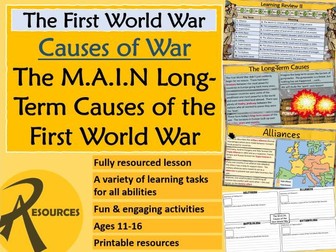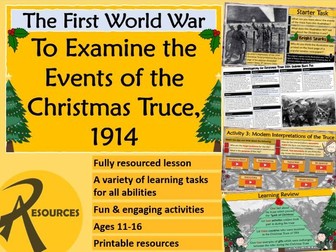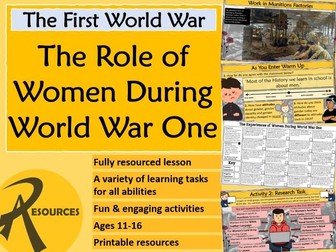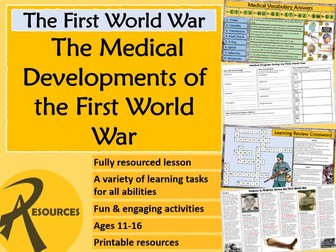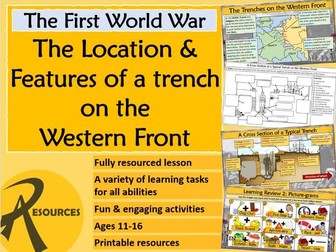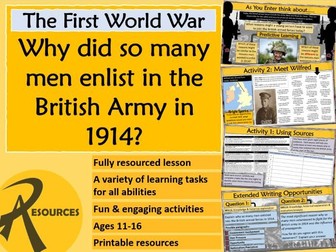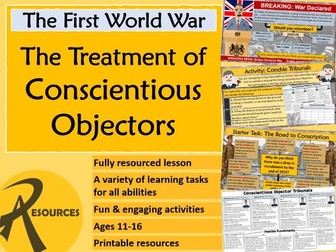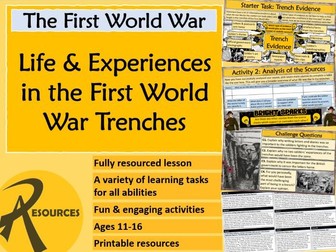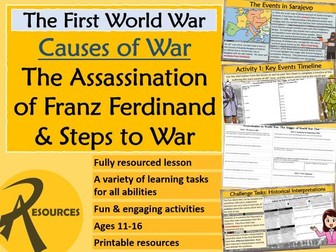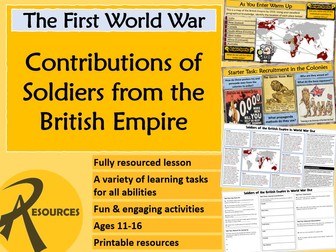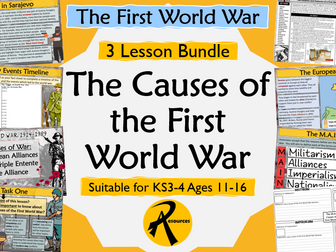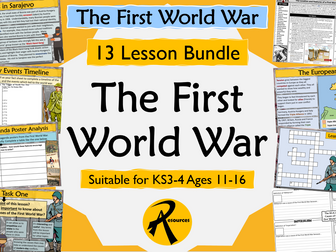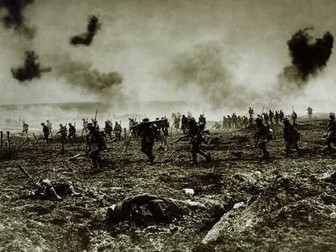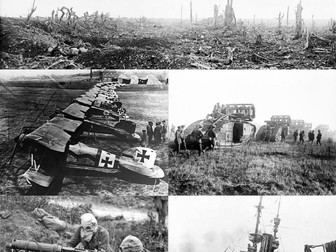The Causes of the First World War - WW1
In this lesson, students will fully understand the M.A.I.N. long-term causes of the First World War – Militarism, Alliances, Imperialism and Nationalism. Students will be first introduced to these key terms and then use them to explain the tensions which existed in Europe by 1914.
This is a fully resources lesson which includes a warmup, starter task, engaging background information, various learning activities, challenge tasks and learning reviews.
**
The lesson includes the following:**
Slide 1: Title slide
Slide 2: Outline of the main lesson aims
Slide 3: As you come in warmup activity – what causes war?
Slide 4: As you come in warmup activity 2 – Why do people argue?
Slide 5: Starter Task 1: Why is it important to learn about the causes of the First World War – suggestions then given.
Slide 6: Starter Task 2: Political cartoon analysis with prompt questions provided.
Slide 7: Background information about Europe in 1914
Side 8: Background information explaining the term long-term causes.
Slide 9: An overview of the M.A.I.N. reasons and discussion task.
Slide 10-13: Background information about militarism, alliances, imperialism and nationalism.
Slide 14-15: Activity 1: Student diagram to help make notes and explain the MAIN causes. Printable resource included.
Slide 16-17: Activity 2: Source based activity based on three cartoons of Europe in 1914.
Slide 18: A student fact sheet for the lesson – printable
Slide 19: Follow Up Challenge Tasks
Slide 20: Learning Review 1
Slides 21-23: Learning Review 2 with printable handout
I would be really grateful if you could leave a review for the lesson if you feel the lesson is effective for you. Many thanks if you spend some of your valuable time doing this as feedback is highly valued.
All images used in this lesson are in the public domain and are therefore copyright free at the time of publishing. Images which require attribution have been attributed in the notes section of each slide where the image appears. If you feel any errors have been made, please contact me at raschoolresources@gmail.com in the first instance to resolve any issues. My lessons are completed using PowerPoint and designed on widescreen formatting. Thank you.
